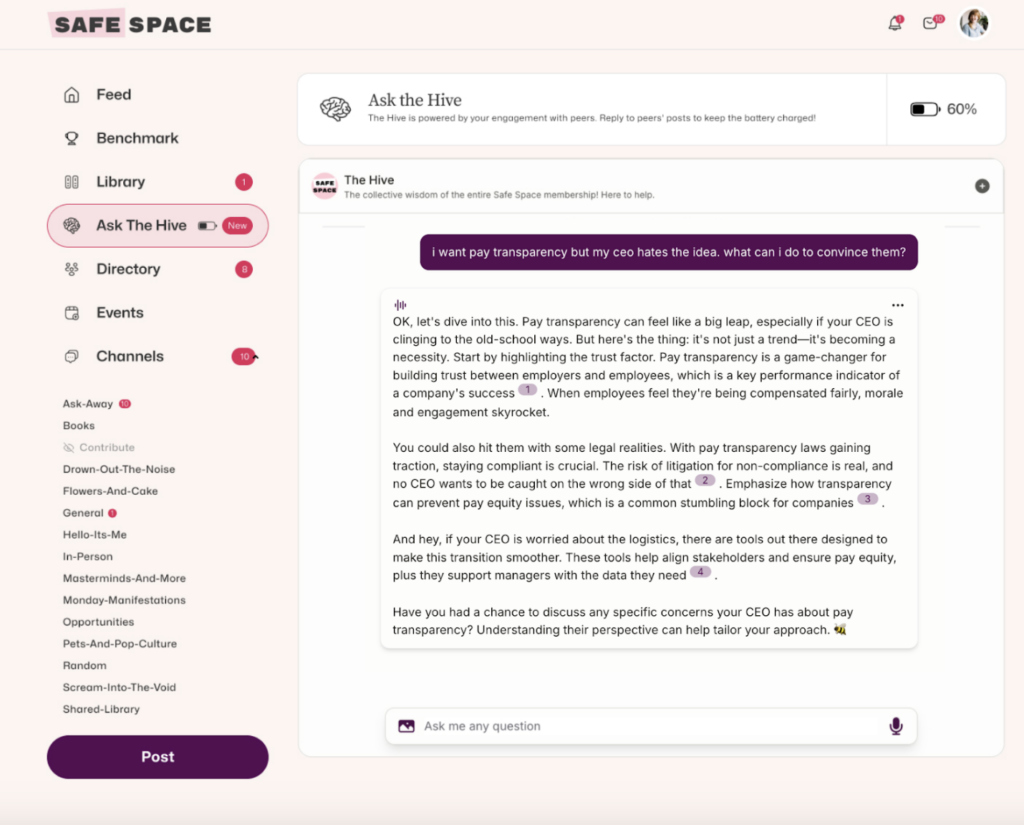✍🏽 How can I evaluate our compensation package compared to industry standards and competitors? How can I ensure we offer competitive salaries and benefits to attract and retain top talent?
📣 Rachel Ackerman, Director of People Ops at Barstool Sports:
Find a compensation benchmarking tool or survey that works for your org. In several orgs that I’ve worked in we’ve used everything from Radford to CompAnalyst to Pequity and Pave. Every company has different needs, so it’s best to do a due diligence review of the various options and see what makes sense cost and time wise and ensure they offer data relevant to your business.
Once you have benchmark data in hand that aligns with your org, use that, your internal incumbent data, candidate expectations and various other data points and use what you have to develop bands for your roles that make sense for your compensation philosophy? Are you trying to lead the market or be at the median? Are you in a competitive landscape where you may need to market certain “hot” roles at a higher percentage versus the rest of your org. There are a lot of components to take into consideration, but this is a great place to begin and then iterate as you build out your comp structure.
📣 Ryan-Mae Pepin, Sr. Director of People Ops at Blackthorn.io:
Pave does a okay enough job if you need a free resource (They just ask you connect your HRIS) We are also using Carta Total Compensation which seems to be better for our size and industry standard, plus if you are in Carta its great to call out fair equity practices. It’s still shaky on International teams, but they claim it’s in the works.
✍🏽 Do you have a good framework on identifying pay for a new hire, but also ensuring you keep internal equity?
Context: Work for a tech company and don’t have a good process in place when identifying a candidate. I want to create a framework that identifies everything we should be looking at when determining pay.
📣 Rachel Ackerman, Director of People Ops at Barstool Sports:
Yes! There are numerous platforms that can assist you with this, like Pave or Pequity, but you can also start small and develop your own in house tool to start.
The first step is building internal compensation bands for your roles and determining where in that band you bring new hires in at. Is it the bottom of your band? I’ve worked for an org where we targeted our median of the band for new hires and promoted employees. Does your philosophy take into consideration any additional merits or certifications an individual has that could place them higher in a band upon hire/promotion. There are a lot of factors to consider.
If you’ve not done this in the past, once you build your internal compensation structure, you can review your incumbent data to see where there may be any inequities occurring and work on correcting those to ensure the future state of your pay program is equitable and fair.


